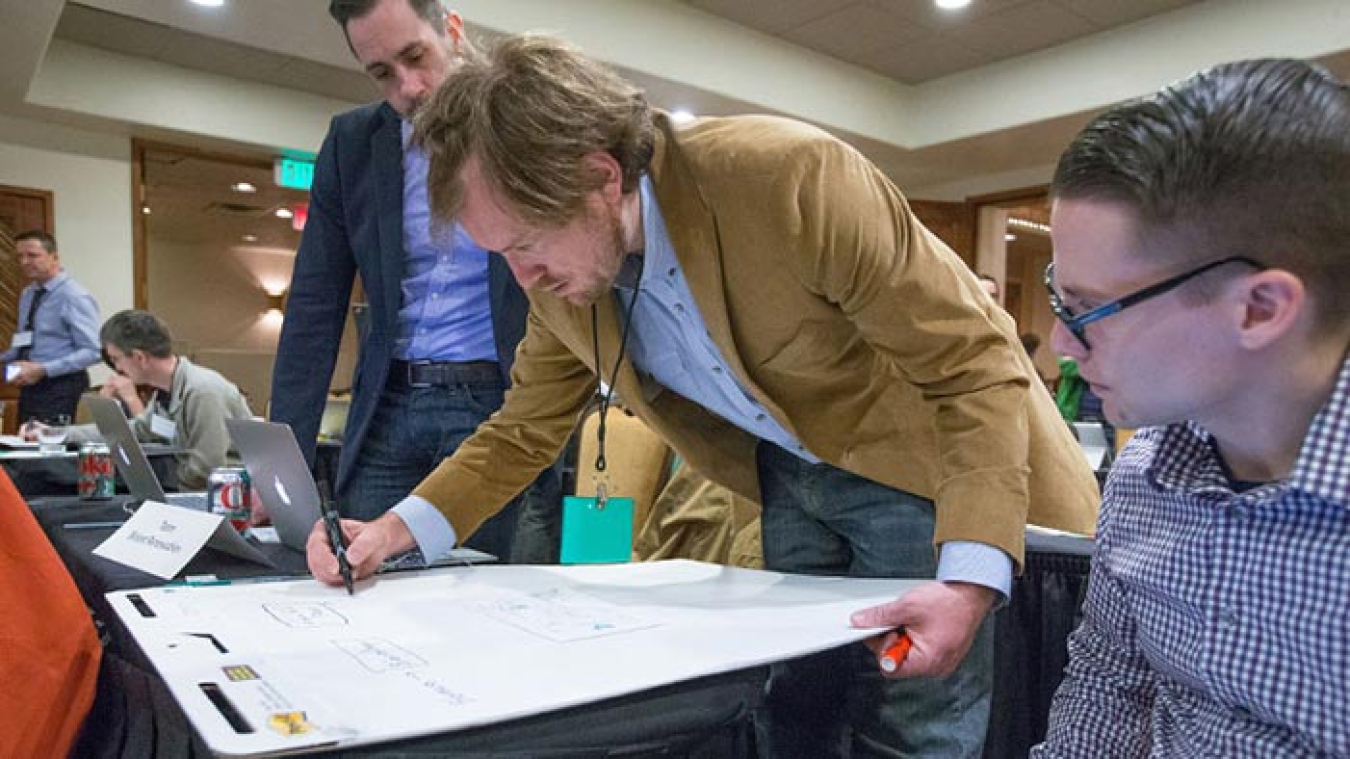
Energy I-Corps participants work on an activity together.
Training for Energy I-Corps Cohort 2 was held March 15–May 5, 2016, in Golden, Colorado.
Cohort 2 was composed of 14 teams from Argonne National Laboratory (ANL), Idaho National Laboratory (INL), Lawrence Berkeley National Laboratory (LBNL), Lawrence Livermore National Laboratory (LLNL), National Renewable Energy Laboratory (NREL), Pacific Northwest National Laboratory (PNNL), and Sandia National Laboratory (SNL).
See photos of Energy I-Corps Cohorts 1 and 2 on our Flickr stream.
Teams and Technologies
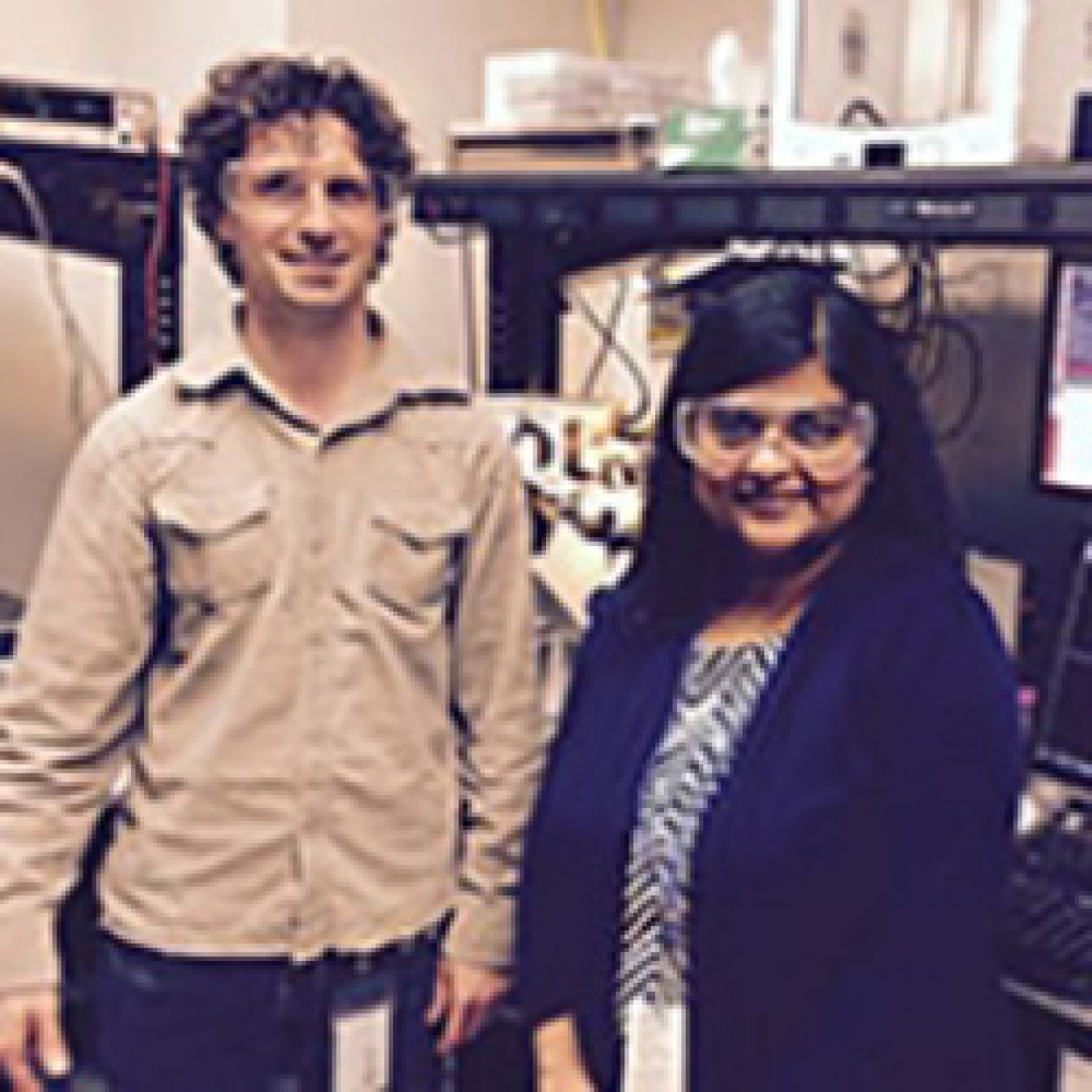
Team Members
- Principal Investigator: Joshua Heinemann
- Entrepreneurial Leads: Joshua Heinemann, Deepti Tanjore
- Industry Mentor: Tom Anderson
Technology Description
The BioAlchemy team has developed a new microfluidic technology (microNIMS) for high-throughput screening of cellulose degrading enzymes. The technology merges microfluidics with mass spectrometry allowing fully automated enzyme processing and assay. Unlike traditional microfluidic detection systems, microNIMS can be used on a wide variety of different enzymes and substrates and to solve multiple enzyme challenges across a broad range of pretreatment conditions and substrate options. The fabrication conditions can be modulated and tailored to target different enzyme/substrate systems. They can also be fabricated in patterned arrays, allowing multiple assays to be run simultaneously. The combined versatility, throughput, and reduced sample consumption make microNIMS an enabling technology for commercial enzyme assay.
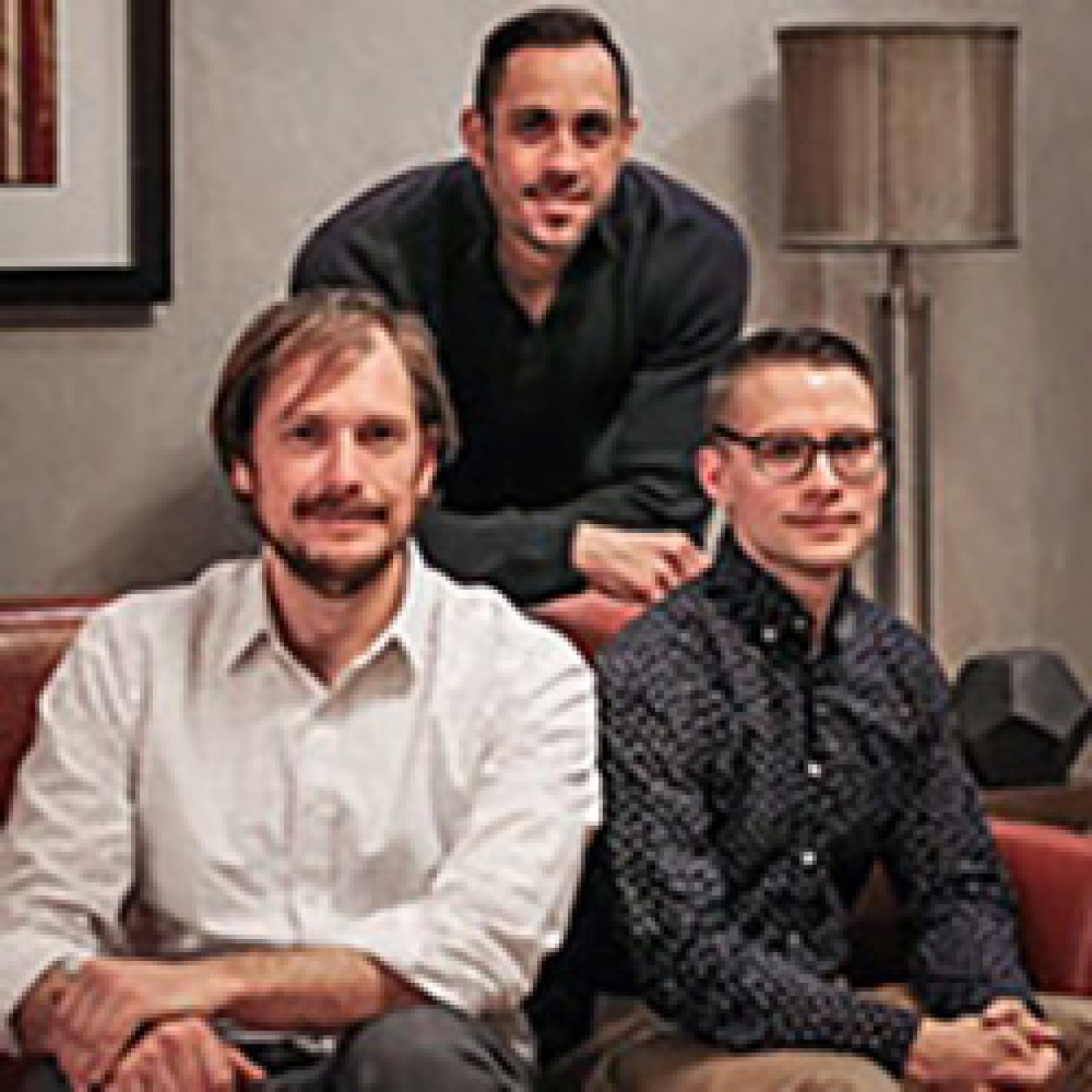
Team Members
- Principal Investigator: Chris Johnson
- Entrepreneurial Leads: Derek Vardon, Steve Christensen
- Industry Mentor: Doug Henston
Technology Description
The team at Biolyst Renewables has developed technologies to produce adipic acid renewably at a competitive cost and lower-environmental footprint than petroleum-derived adipic acid. Adipic acid is a primary component of nylon, and its production from petroleum releases significant quantities of nitrous oxide, a potent greenhouse gas nearly 300 times worse than carbon dioxide. Biolyst Renewables' approach overcomes this issue by producing adipic acid renewably from biomass at a low cost and eliminating the release of nitrous oxide, resulting in one-tenth of the greenhouse gas footprint. With the help of Energy I-Corps, the team hopes to understand barriers to entry for the rapidly growing bioplastics market and how to compete with petroleum products in an environmentally sustainable manner.
Team Members
- Principal Investigator: Robert Haushalter
- Entrepreneurial Lead: Jorge Alonso‐Gutierrez
- Industry Mentor: Todd Pray
Technology Description
Evodia is developing engineered microbes to convert inexpensive, renewable sugars into high-value specialty chemicals. Its platform technology will provide novel biosynthetic routes to compounds with established markets and can be extended to produce novel compounds through simple genetic alterations in the host cell—all from a single inexpensive feedstock. Evodia's technology will therefore provide "greener" routes to established and novel products while lowering production costs.
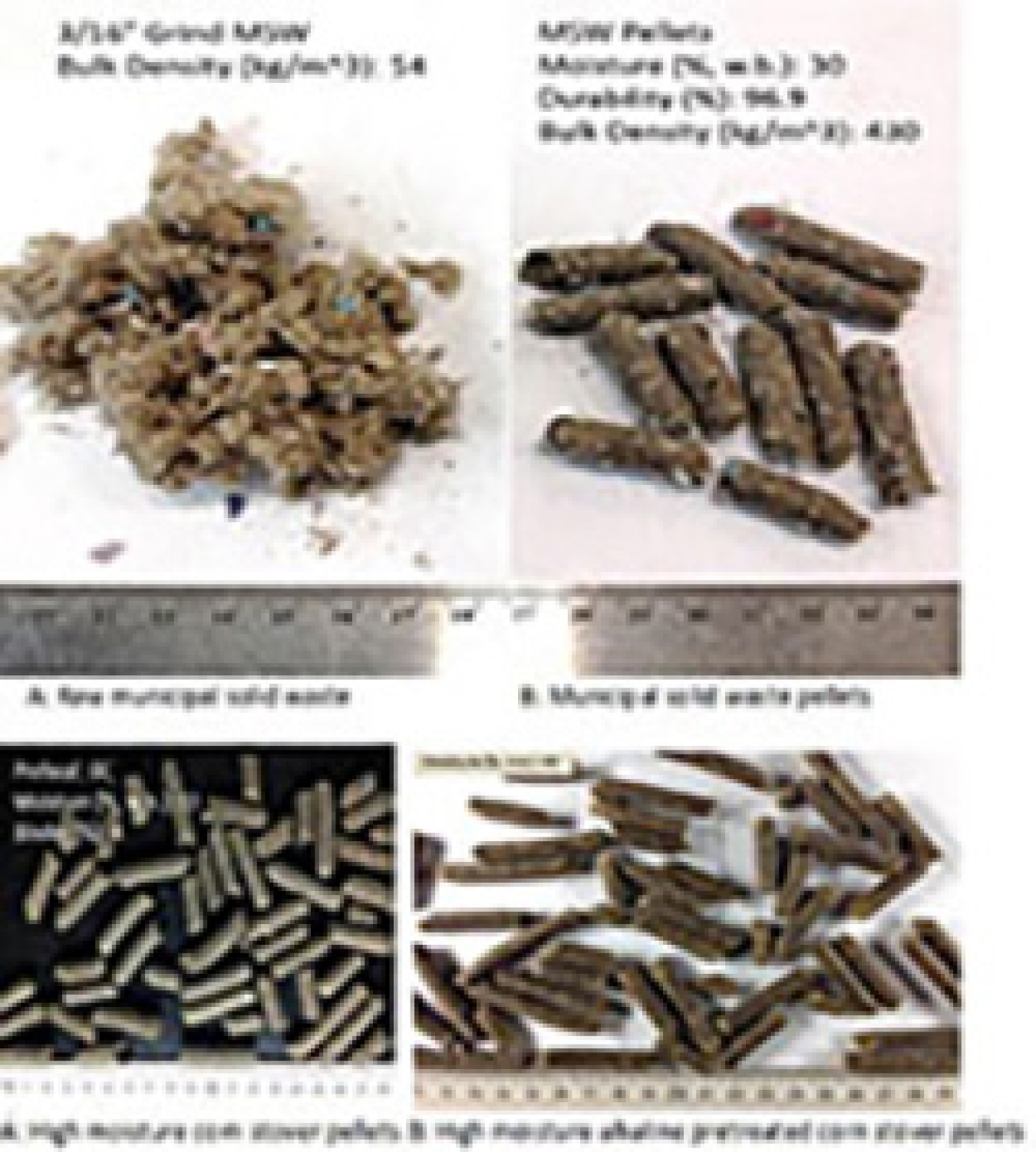
Team Members
- Principal Investigator: Jaya Shankar Tumuluru
- Entrepreneurial Lead: Erica Belmont
- Industry Mentor: Art Baker
Technology Description
INL has developed a high-moisture pelleting process that decreases the drying cost and manages the feedstock moisture more efficiently. Through this process, the biomass is pelleted at moisture contents greater than 25%. The pellets are partially dried during production by the frictional heat developed in the pellet die during compression and extrusion. Additionally, a short preheating step replaces the conventional, energy-intensive steam conditioning. This step helps reduce the feedstock moisture content as well as activate biomass components, like lignin. Techno-economic analysis indicated the process reduces energy and production costs by about 40% to 50% compared to a conventional pelleting method. Currently, scale-up of the high-moisture pelleting process from lab to pilot and commercial scale is in progress.
Team Members
- Principal Investigator: Yongqin Jiao
- Entrepreneurial Lead: Suzanne Singer
- Industry Mentors: Roger Werne, Tony Lazar
Technology Description
The Micro Miners team develops and deploys innovative biotechnologies to sequester and recover rare earths from low-grade sources (e.g., mine tailings, geothermal fluids, and recyclable materials) for further diversifying the global rare-earth supply chain. It focuses on research and development of cost-effective and eco-friendly approaches that rely on environmentally safe microorganisms. To increase efficiency and specificity of rare earth extraction, it utilizes both native microbial features as well as advanced bioengineering technologies. With the development of an extraction pipeline that promises the delivery of rare-earth materials with high-efficiency and purity, it addresses the vulnerability and criticality of rare earths to emerging clean energy technologies.
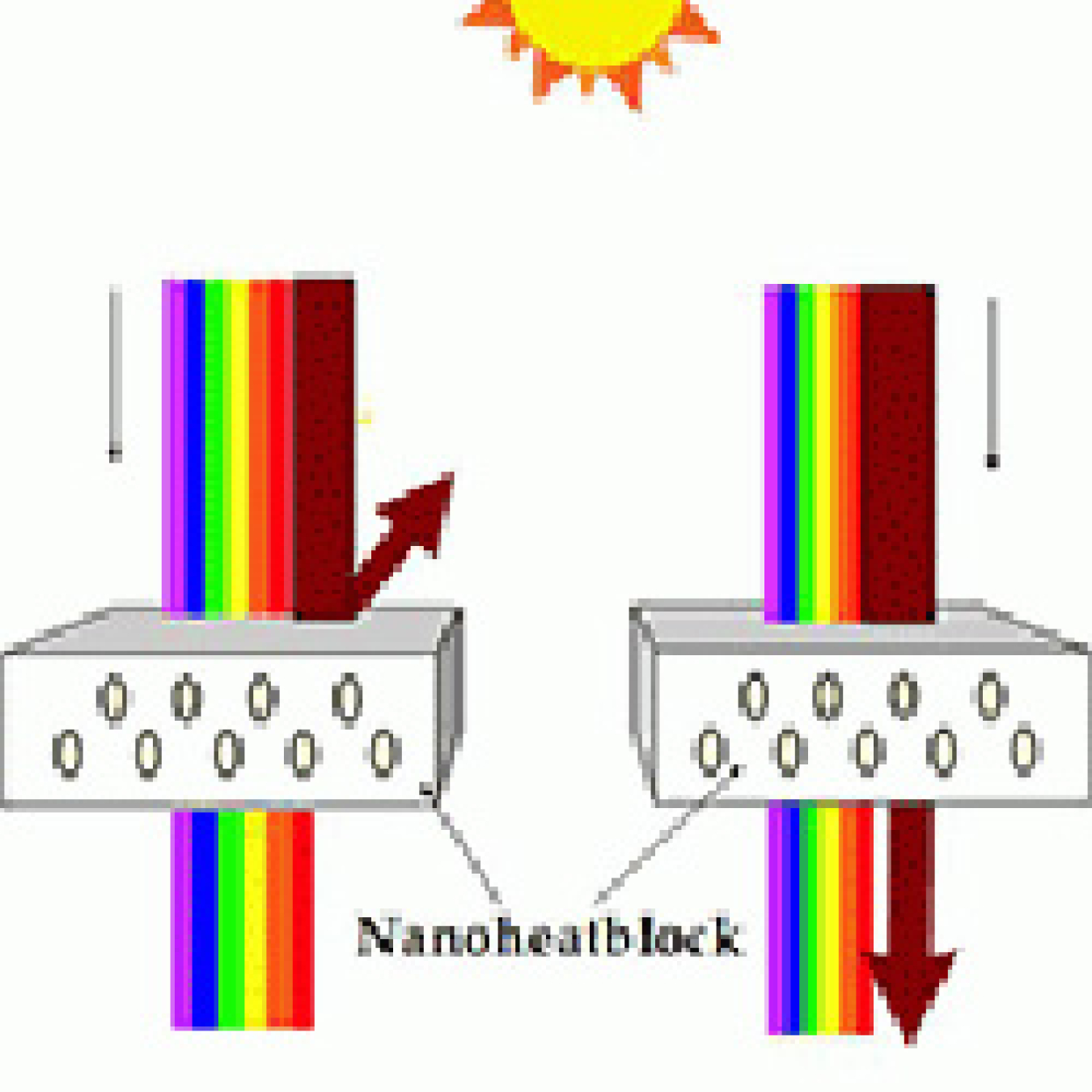
Team Members
- Principal Investigators: Jie Lie, Yugang Sun, Ralph Muehleisen, Leah Guzowski
- Entrepreneurial Lead: Xiaojie (Alina) Yan
- Industry Mentor: Carl Cobb
Technology Description
NanoHeatBlock, an advanced processing technology, allows for the manufacturing of particulate thermochromic films, improving the performance of smart windows. Instead of using bulk VO2 film, ANL has synthesized thin-film window coatings containing VO2 nanorods. The presence of the nanorods significantly enhances the optical and infrared blocking performance of the window coating. In addition, the technology is scalable with the capacity of finely tuning material properties, producing high-quality window films at a low cost. If successful, it could result in a technical potential energy savings up to 2.64×1017 J/year for new and existing commercial and residential markets combined. With the help of Energy I-Corps, the team hopes to explore various paths forward, demonstrate the processes, and bring the technology to market.
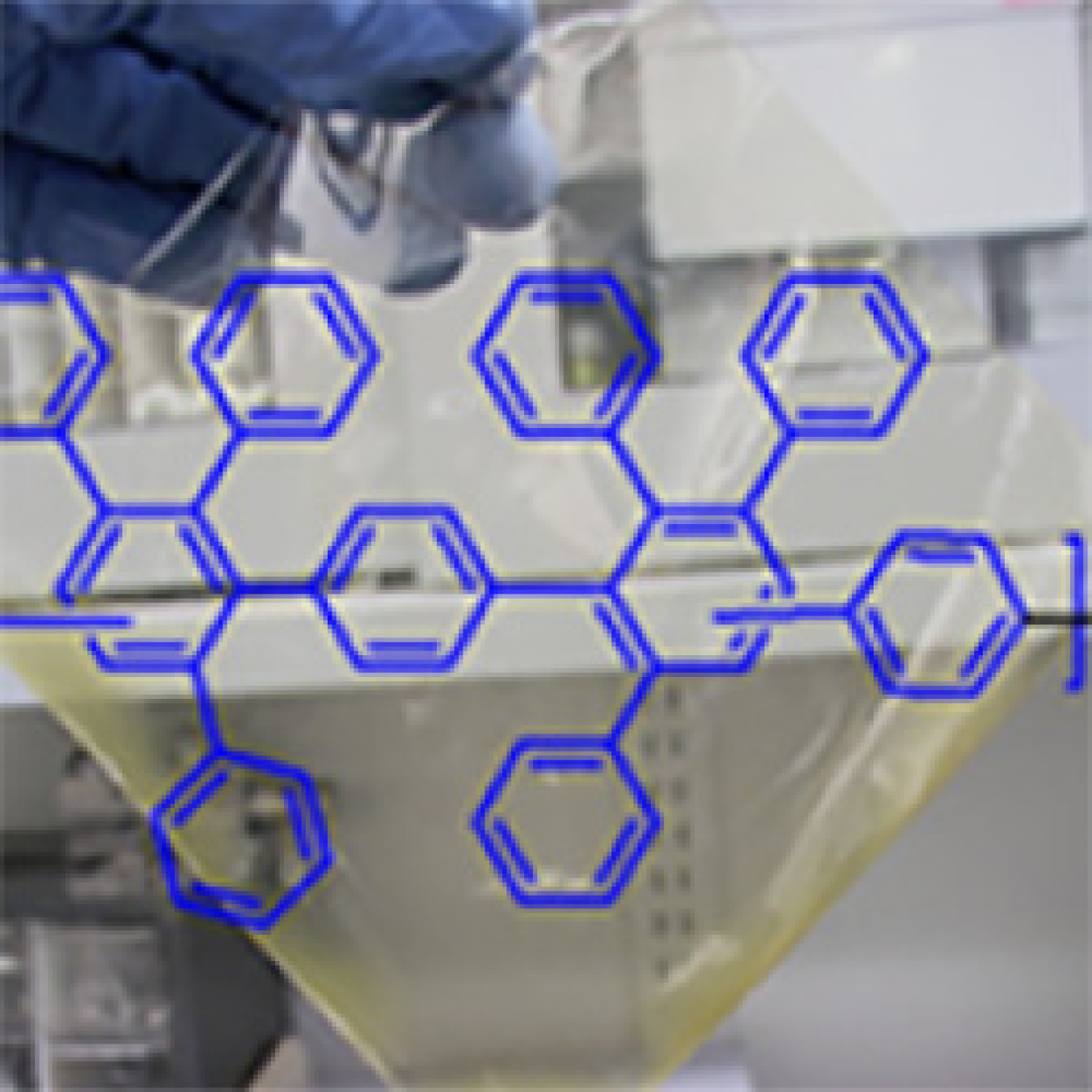
Team Members
- Principal Investigator: Cy Fujimoto
- Entrepreneurial Lead: Jeffrey Nelson
- Industry Mentor: Tom Brennan
Technology Description
Polymer membranes play a crucial function in many energy and water technologies, including energy storage, water electrolysis and purification, and stationary and transportation power systems. The membranes are tailored to allow conduction of specific ionic species between the negative and positive electrodes in an electrochemical system. For example, polymer membranes can be optimized for transport of protons (H+) or hydroxyl ions (OH-), depending on the acidic or alkaline environment of the energy-water system. The prototype poly (phenylene)-based hydrocarbon membrane separators developed at SNL are showing exceptional performance in real-world application tests by system customers and partner research institutions.
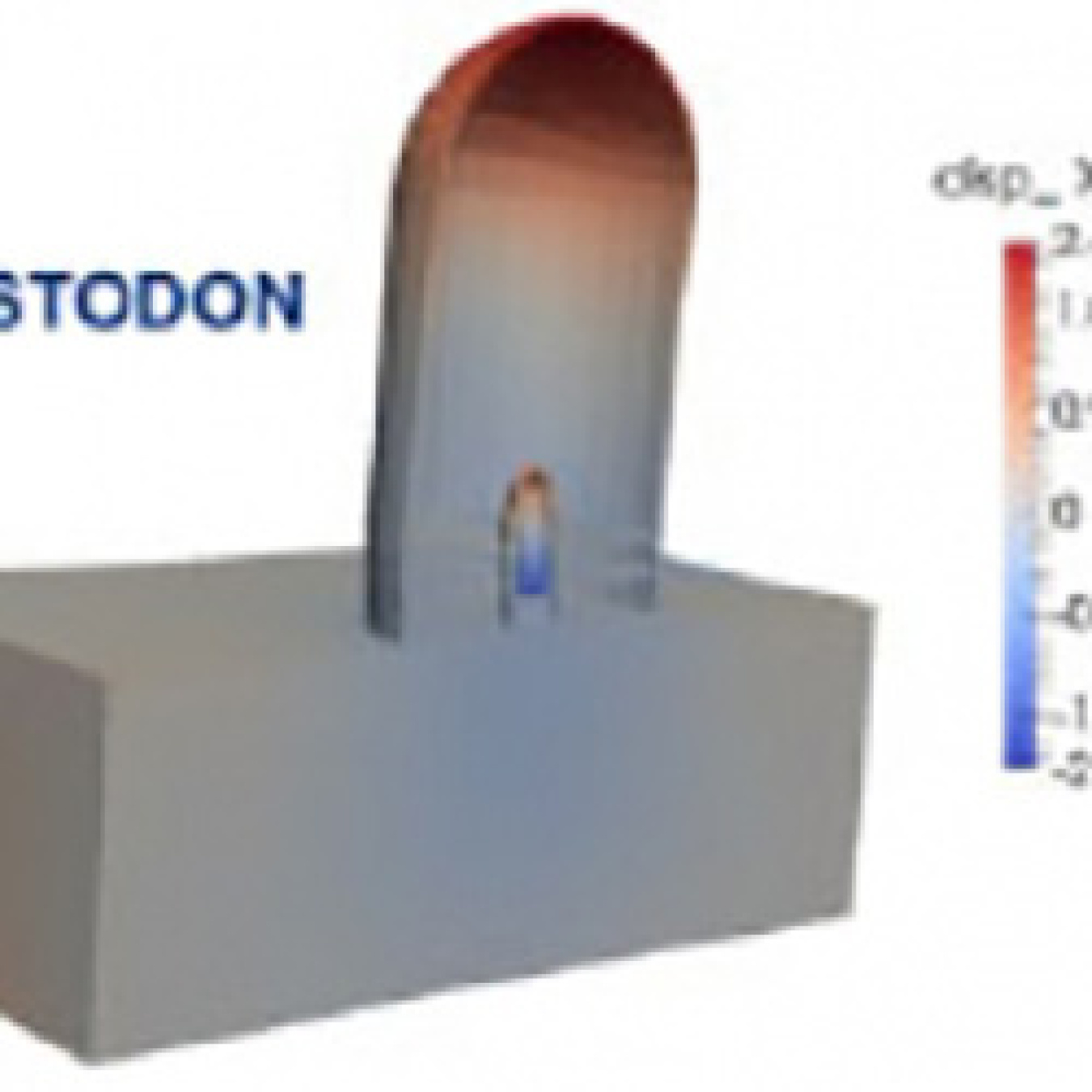
Team Members
- Principal Investigator: Justin Coleman
- Entrepreneurial Lead: Chandrakanth Bolisetti
- Industry Mentor: Mark Kaczor
Technology Description
Currently, the U.S. Department of Energy and the nuclear industry perform seismic analysis using equivalent-linear numerical analysis tools. For large levels of shaking where soil strains are high, these tools are likely inaccurate for seismic and flooding probabilistic risk assessment calculations. This proposed technology with advanced seismic methods and tools will minimize uncertainty and reduce quantified safety margins and costs required to mitigate seismic hazards.
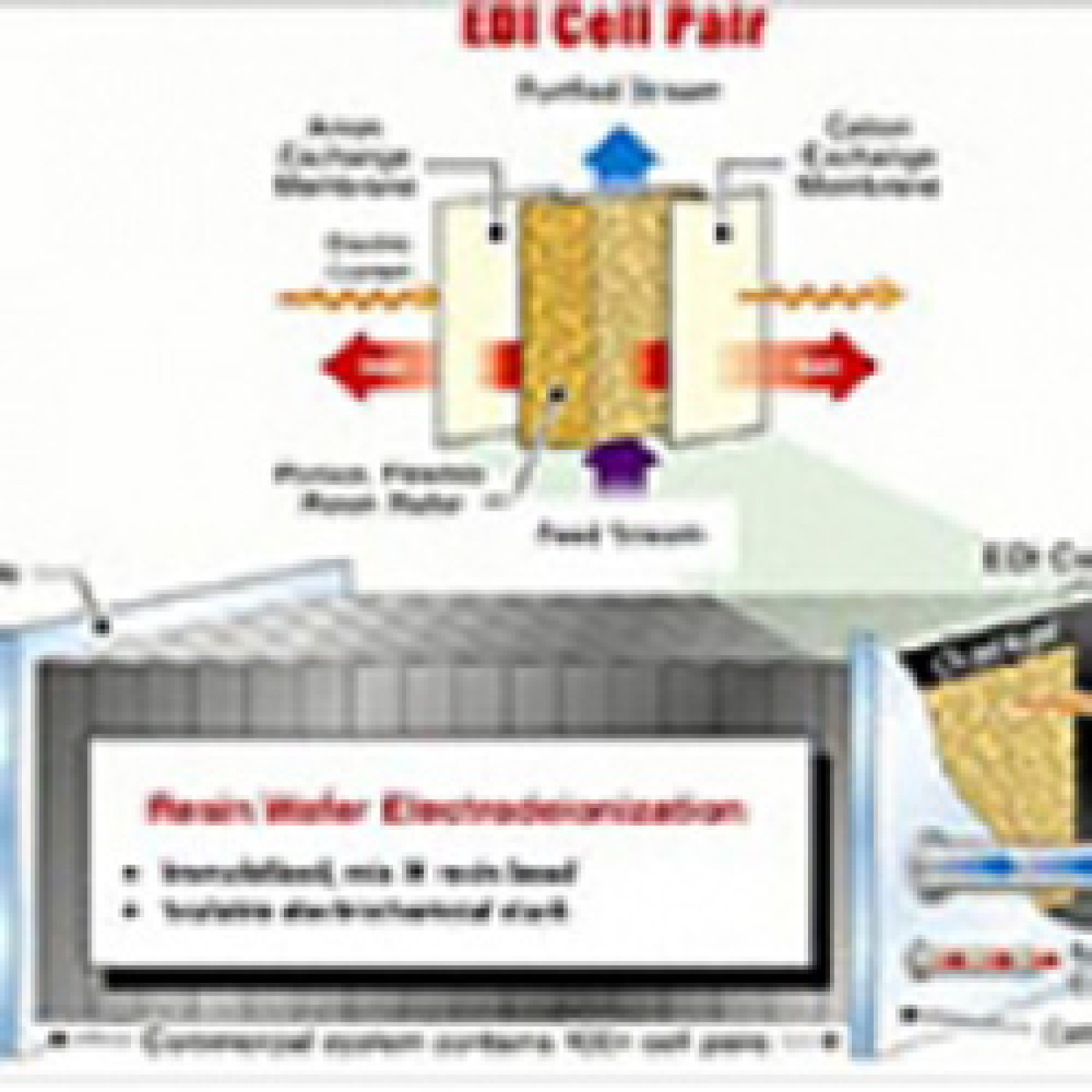
Team Members
- Principal Investigator: Yupo Lin
- Entrepreneurial Lead: Jessica Linville
- Industry Mentor: Michael Gurin
Technology Description
Ion-exchange resin wafer electrodeionization (RW-EDI) is an energy-efficient, low-cost separation technology that directly utilizes electricity to remove ions from aqueous streams. It integrates commercially available components of ion-exchange resin material, membranes, and electrically driven separation devices to increase the energy efficiency and reduce the cost of processing aqueous streams. The technology offers enhanced fluid and flow distribution; higher conductivity; superior pH control; ease of materials handling and system assembly; and a porous solid support for incorporation of catalysts, biocatalysts, and other adjuvants. RW-EDI is a near-commercial technology that won 2001 and 2006 R&D 100 Awards for chemicals/water purification and bio-based chemical/biofuel production.
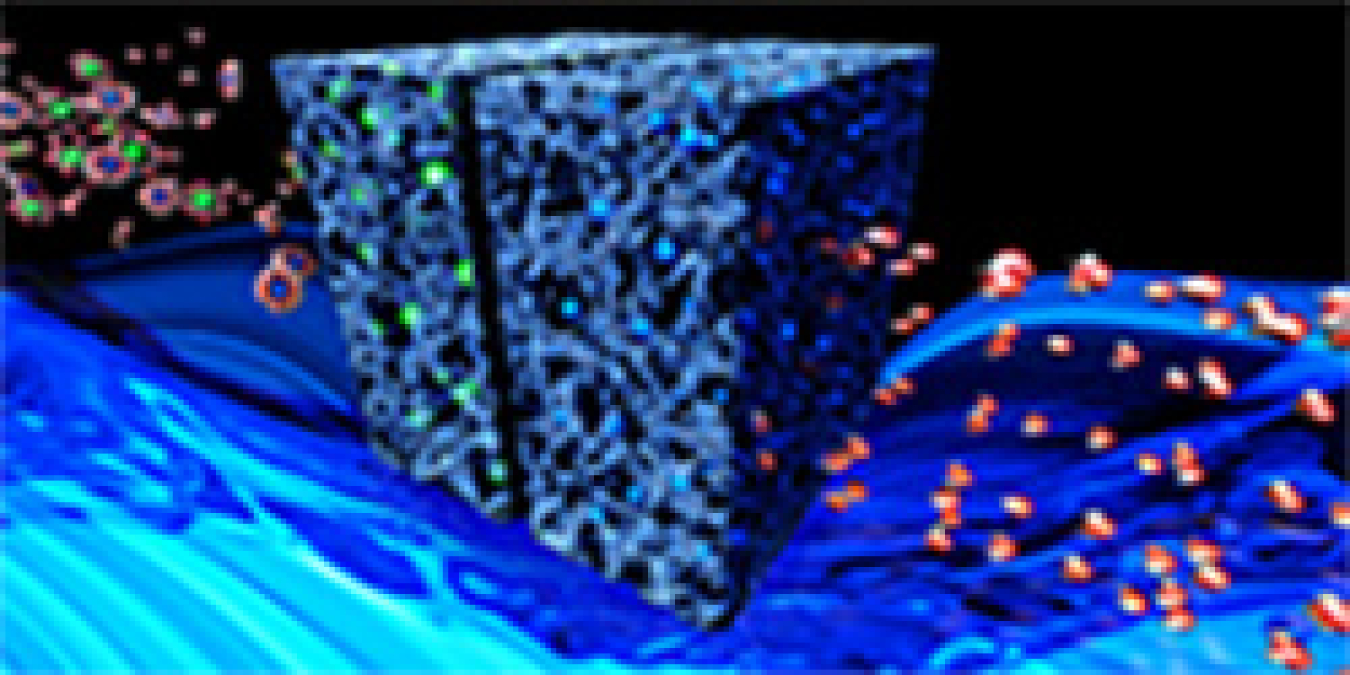
Team Members
- Principal Investigator: Michael Stadermann
- Entrepreneurial Lead: Tania Ryan
- Industry Mentors: Jim Presley, Roger Werne
Technology Description
Flow-through electrode capacitive desalination (FTE-CD) is a novel desalination method that removes ions from water electrostatically and is best suited for low concentrations of salt (15 g/L or less). Potential applications for this technology are numerous but would most benefit the production of ultrapure water. Ultrapure water is required for the production of advanced electronics and pharmaceuticals and as a working fluid for power plant turbines. It typically takes several steps to produce ultrapure water, which includes using reverse osmosis (RO) membranes to remove most of the salt. FTE-CD can remove salt much faster at low concentrations than RO can, reducing both capital cost and the energy cost of production. The overall savings are expected to be 30%. Upon success, the technology could expand into additional markets such as brackish water desalination for municipal or agricultural use.
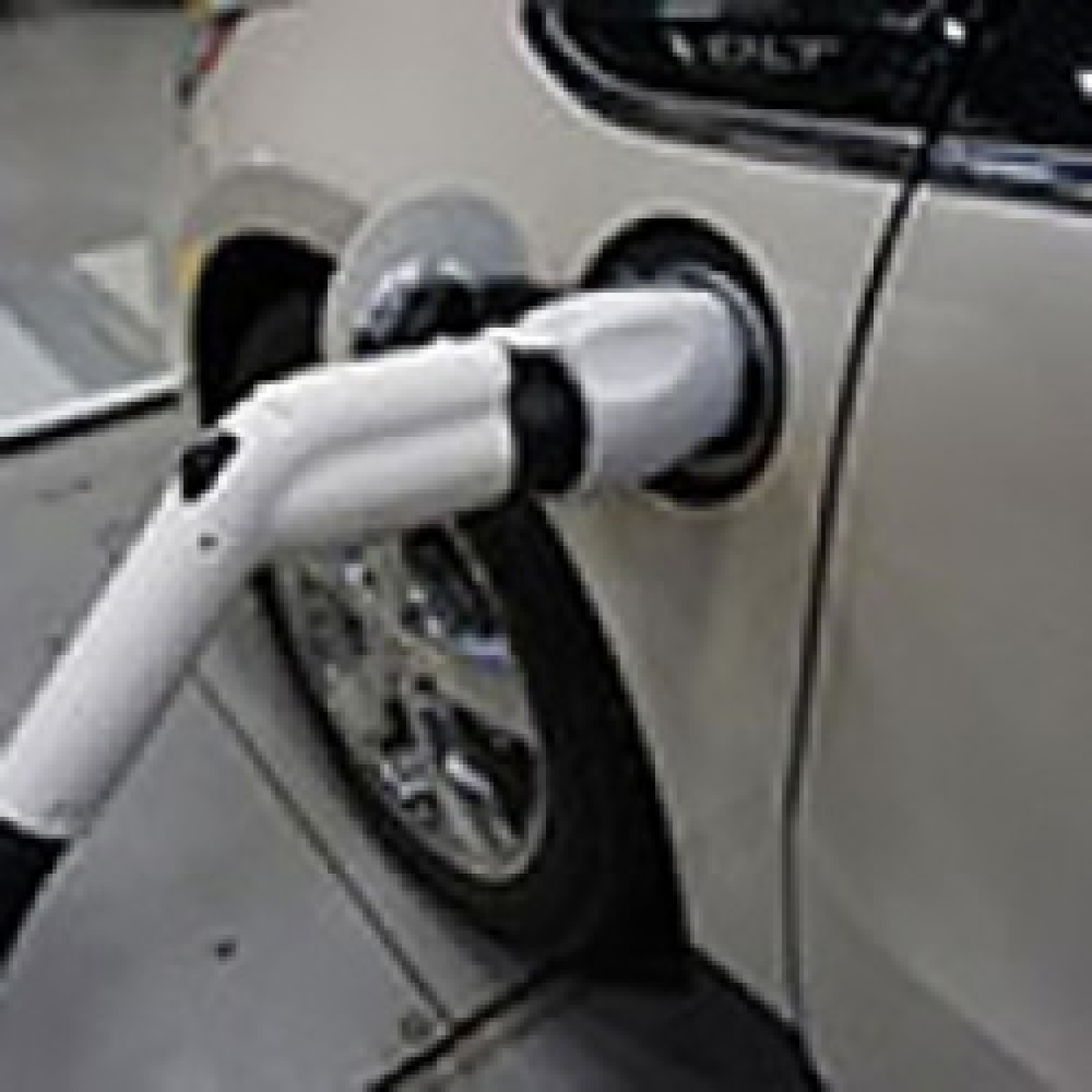
Team Members
- Principal Investigator: Jason Harper
- Entrepreneurial Lead: Le Ge
- Industry Mentor: Matt Raymond
Technology Description
The smart charge adapter (SCA - patent pending) is a handheld, internet of things device connected between any charge station and plug-in electric vehicle (PEV). The SCA is PEV/charge station agnostic. The SCA provides communication, control, and monitoring capabilities for the charging session, providing incentives for the owner of the SCA and utility/grid operator. Potential applications include PEV submetering, demand response, frequency regulation, charge scheduling, and PEV charging data analytics. Energy I-Corps will help the team assess if there is a market for the SCA technology, identify the best initial customer segment, and develop the most appropriate path to commercialization.
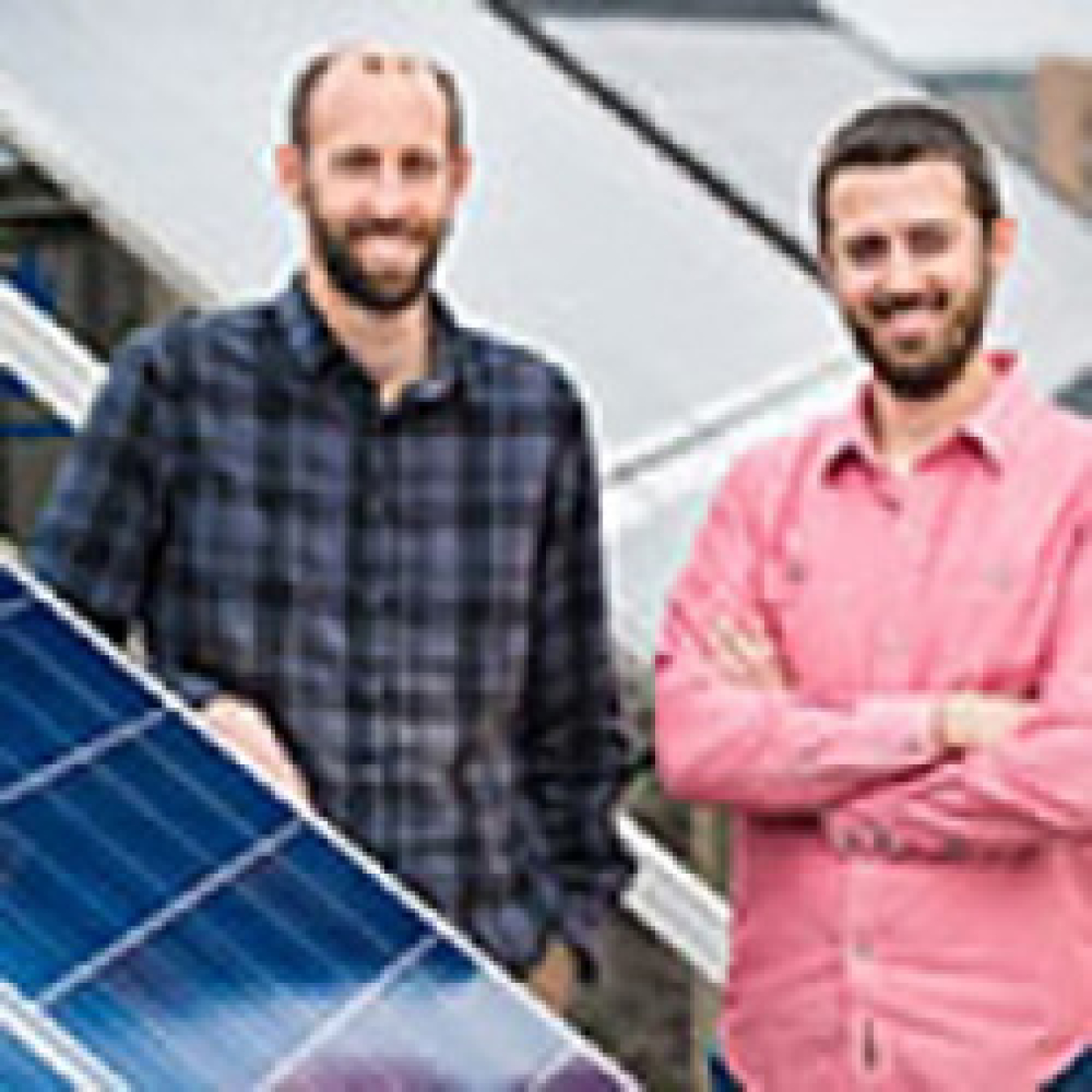
Team Members
- Principal Investigator: Michael Deceglie
- Entrepreneurial Lead: Chris Deline
- Industry Mentor : Anders Olsson
Technology Description
SolGuard's integrated photovoltaic (PV) safety and performance solution will provide remote shut-off capability of solar systems while giving owners automatic alerts of potential safety and energy-production problems. Electrical safety can discourage firefighters from intervening during a fire, and faults in the system can pose a fire risk. For module and inverter manufacturers, the technology enables sales of existing products into rooftop markets, which are quickly closing due to National Electric Code (NEC) regulations. For system owners, it offers compliance with upcoming NEC regulations and improved actionable information about system performance and problems associated with fire risk. Finally, for insurers/firefighters, it provides a decreased risk of PV system-started fires and improved firefighting response if a fire does occur.
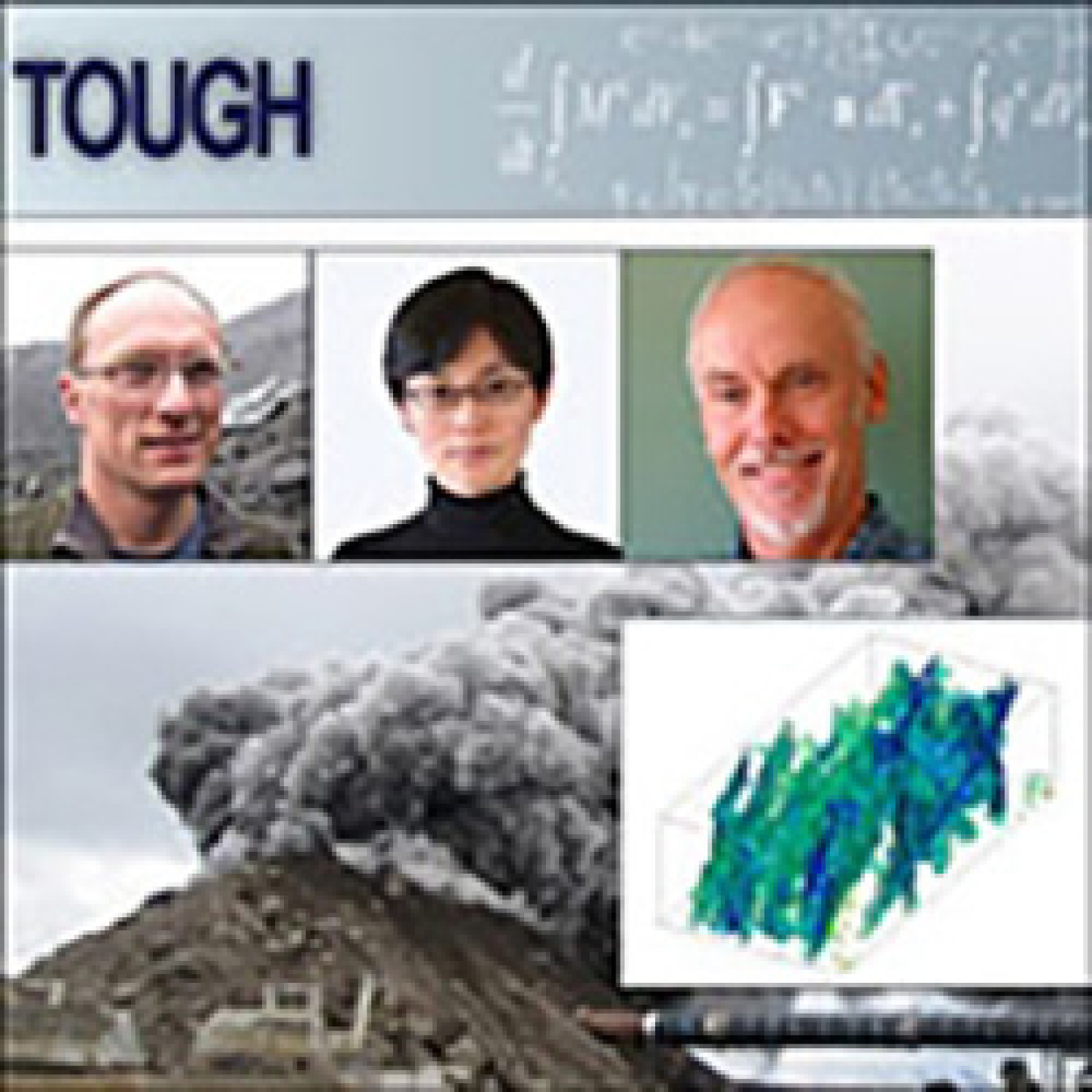
Team Members
- Principal Investigators: Nic Spycher. Yinghi Zhang
- Entrepreneurial Lead: Stefan Finsterle
- Industry Mentor: Sabodh Garg
Technology Description
The TOUGH software simulates how valuable resources—such as water, oil, gas, and heat—can be extracted from the pore space of soils and rocks or how harmful materials—such as chemical and radioactive wastes, or carbon dioxide—can be safely stored in the deep earth or tracked as they migrate through the subsurface. The team has developed, customized, and tested such simulation software and provided the expertise to address a wide variety of challenging environmental and energy problems. With the help of Energy I-Corps, the TOUGH suite of codes may be positioned as the tool of choice for complex subsurface simulations in academia, government organizations, and industry.
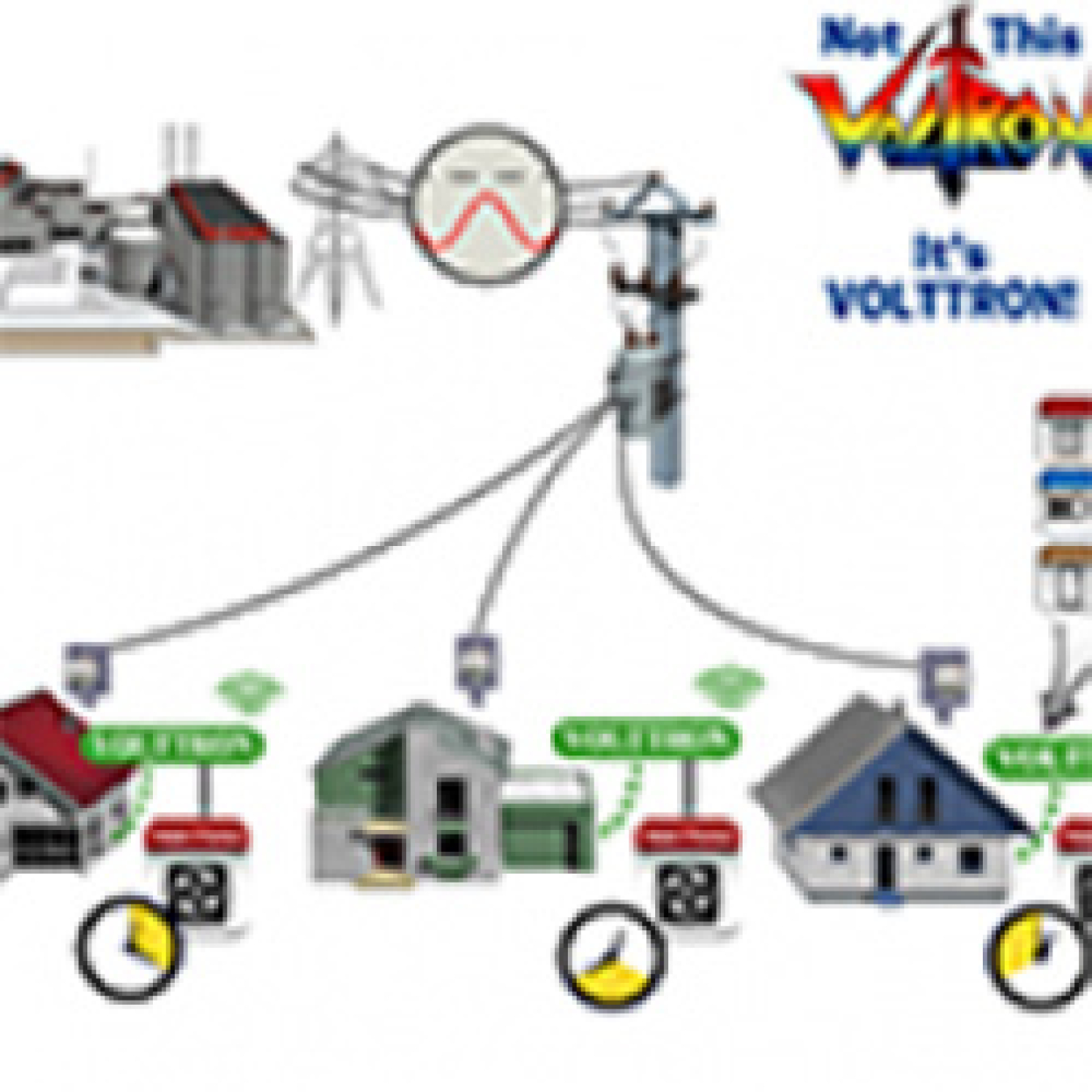
Team Members
- Principal Investigator: Jeremy Haake
- Entrepreneurial Lead: George Hernandez
- Industry Mentor: Jim Benson
Technology Description
VOLTTRON is an open-source platform for distributed sensing and control funded by the U.S. Department of Energy's Building Technologies Office. VOLTTRON enables rapid development and deployment of Smart Building solutions by allowing applications to easily communicate with physical devices and other resources.

